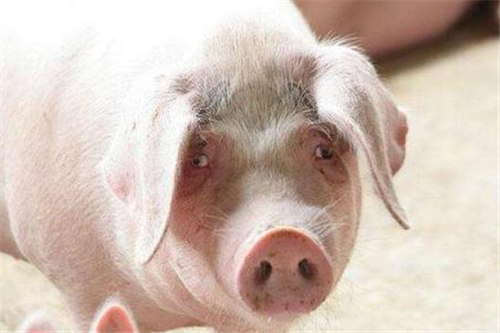Five common causes of difficult control of classical swine fever in clinic and their countermeasures
The epidemic of classical swine fever is serious, and the reasons are closely related to the following factors: improper immunization measures, unqualified vaccine, inappropriate preservation, non-standard operation, unreasonable immunization procedures, which will seriously affect the immune effect.
Coping strategies: use qualified vaccines, pay attention to proper preservation, standardize the use of operating methods; do not copy the procedures in books, but choose reasonable immunization procedures according to the local and local epidemic situation. In general, in the areas where there is no classical swine fever epidemic, the piglets are immunized with the attenuated classical swine fever virus lyophilized vaccine once at the age of 60 days, and maintained until they are out of the column; in the areas with less classical swine fever and less pollution, it is appropriate for piglets to be immunized twice, that is, the piglets are first immunized from 21 days old to 25 days old, 2 immunity from 60 days old to 65 days old, and no repeated injection within 1 year; in areas with serious infection of classical swine fever virus, advanced immunization should be given to piglets.

The antibiotics such as dysentery, kanamycin and sulfonamides in the prevention of medication errors can inhibit the proliferation of B lymphocytes and affect the immune effect of virus vaccine. the wrong use of these drugs or feed additives containing these drugs will lead to leukopenia and affect the immune response of the body.
Coping strategies: dysentery, kanamycin, sulfonamides or feed additives containing these drugs should not be used within 10 days before and after immunization.
The pig herds in some pig farms come from different regions, the age of piglets is different, whether immunity and the effect of immunity are difficult to determine, if mixed with infected pigs, infection will occur.
Coping strategies: large-scale pig farms should implement a full-in and all-out management system and adhere to self-breeding; when newly-built pig farms do need to introduce piglets from other places, they must contact the veterinary department of pig origin and select piglets immunized with classical swine fever vaccine. after introduction, we should set aside an isolation observation period of 1 to 2 weeks, find suspicious piglets and take measures in time.
Vertical infection harms classical swine fever virus through the placenta, resulting in abortion, stillbirth, deformity and the death of weak piglets a few days after delivery, resulting in significant economic losses.
Coping strategy: breeding pigs should be immunized once a year. In order to overcome the interference of maternal antibodies, 3 ~ 4 doses of classical swine fever vaccine can be injected into weaned piglets. In the areas where classical swine fever is common, advance immunization can be used to protect piglets, that is, one dose of classical swine fever vaccine is injected before lactation after birth, lactation is carried out 2 hours to 3 hours after injection, and once more at the age of 60 days to 65 days old.
Clinical diagnosis is difficult to use vaccine immunization, although the incidence of classical swine fever decreased significantly, but there are still pigs infected with classical swine fever, but the symptoms tend to be mild, showing atypical or mild type. At the same time, bovine viral diarrhea virus is closely related to classical swine fever virus, and they have the same antigen. Bovine viral diarrhea virus can also lead to stillbirth of pigs and death of newborn piglets. The clinical characteristics and general pathological changes of piglets are similar to those of chronic classical swine fever. Therefore, when there are atypical cases in clinic, it is difficult to make a diagnosis.
Coping strategy: pay attention to the detection of swine fever antibody level in pigs and timely reinjection of classical swine fever vaccine. Large-scale pig farms should do a good job in the diagnosis of swine fever immunity in order to accurately determine whether they are infected with classical swine fever virus. So far, this is the most simple, convenient, accurate and reliable method for the diagnosis of classical swine fever. For mild classical swine fever, 20 ~ 30 doses of classical swine fever vaccine can be cured by one injection. (source: culture and feed)
Related
- On the eggshell is a badge full of pride. British Poultry Egg Market and Consumer observation
- British study: 72% of Britons are willing to buy native eggs raised by insects
- Guidelines for friendly egg production revised the increase of space in chicken sheds can not be forced to change feathers and lay eggs.
- Risk of delay in customs clearance Australia suspends lobster exports to China
- Pig semen-the Vector of virus Transmission (4)
- Pig semen-the Vector of virus Transmission (3)
- Five common causes of difficult control of classical swine fever in clinic and their countermeasures
- Foot-and-mouth disease is the most effective way to prevent it!
- PED is the number one killer of piglets and has to be guarded against in autumn and winter.
- What is "yellow fat pig"? Have you ever heard the pig collector talk about "yellow fat pig"?



